There is a sharp contrast between the vision and the reality of New Bedford as the wind energy hub of Massachusetts. Due to concerns of potentially negative effects on the fishing industry, this plan is opposed by the commercial fishing industry and installing offshore wind turbines has stalled. Therefore, the project, Carbon Sequestration Symbiosis: Reconciling New Bedford Fishery and Offshore Wind Industry, engages with ecology and labor reconsideration to reconcile and support both industries and react to climate change which is also threatening the commercial fishing industry by ocean acidification.
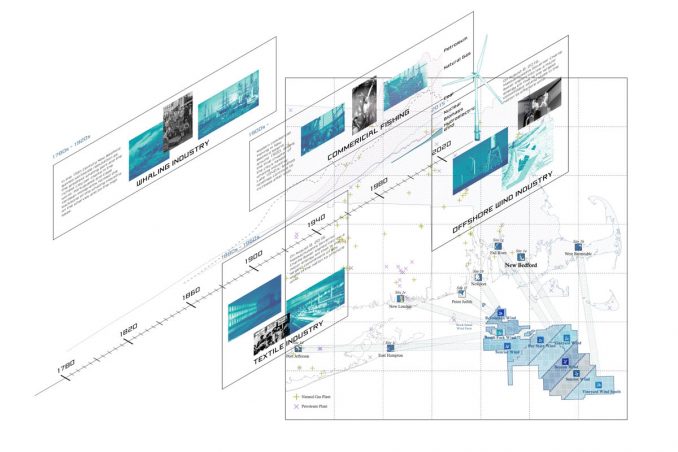
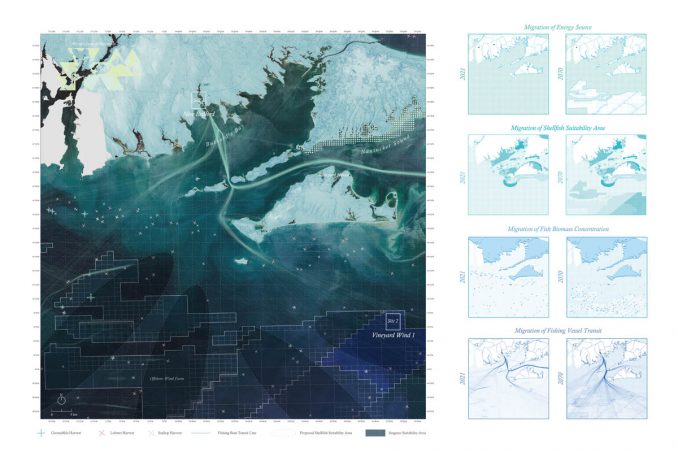
The Carbon-Neutral Cooperative System
The ultimate goal of this project is to create a net-zero carbon system. This carbon sequestration symbiosis is created with the combination of two sites. In this proposed system of pairs of onshore and offshore sites, the onshore sites will provide labor and infrastructural support and more importantly the site to offset the carbon emission of each pair. And offshore wind farms will utilize the reef effect of turbine foundations to together form a carbon sequestration symbiosis that supports the fishing industry. New Bedford and the Vineyard Wind farm will be the initial prototype. The industrial, material and energy connection between two sites are tied with the process of the fishing industry. Both onshore and offshore is a combination of manmade machinery and ecosystem. The system’s products will be substituted for the traditional ones to support both inside and outside the system.
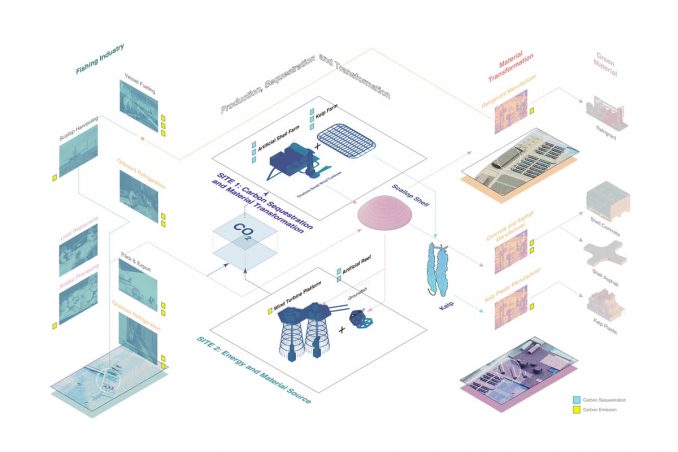
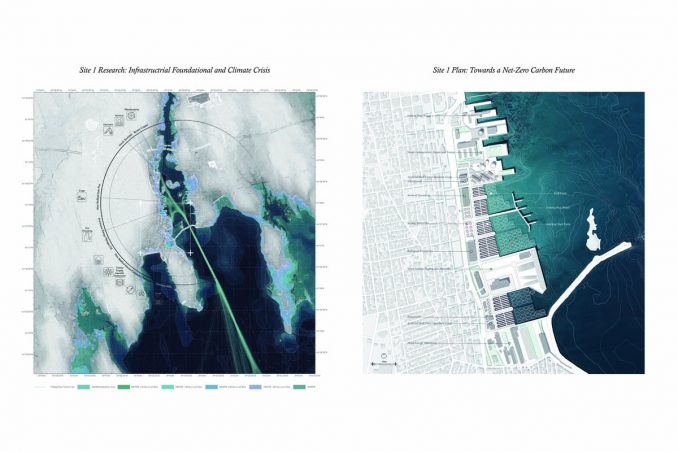
Site 1 – Labor, Infrastructure and Carbon Offset
Based on the analysis of sea-level rise situations and the current planning of the ports in New Bedford, the intervention started with the fortification of the existing infrastructures on the littoral edge such as fishing ports, wind energy terminals, and mixed-use sites for both industries. The shoreline will keep retreating as a response to sea-level rise.
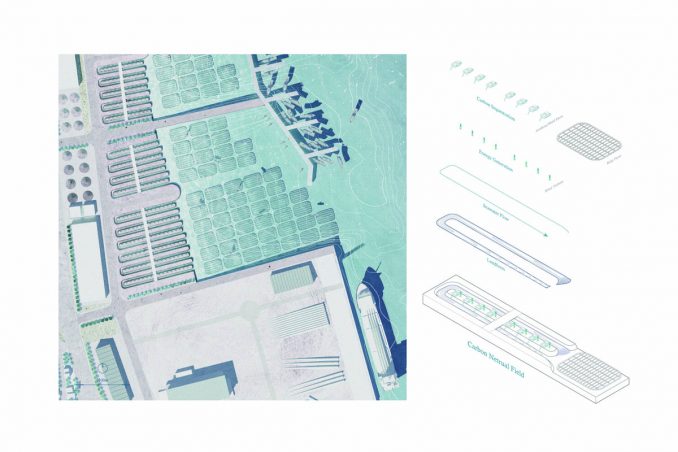
There will be a series of carbon-neutral fields on the littoral edge. The artificial shell farms consist of machines powered by wind turbines that take in and electrify seawater to promote carbonate mineral precipitation to store carbon in seawater as a more permanent form. Kelp farms will be a more natural sequestration infrastructure. Both products will join the material circulation to limit carbon emissions.
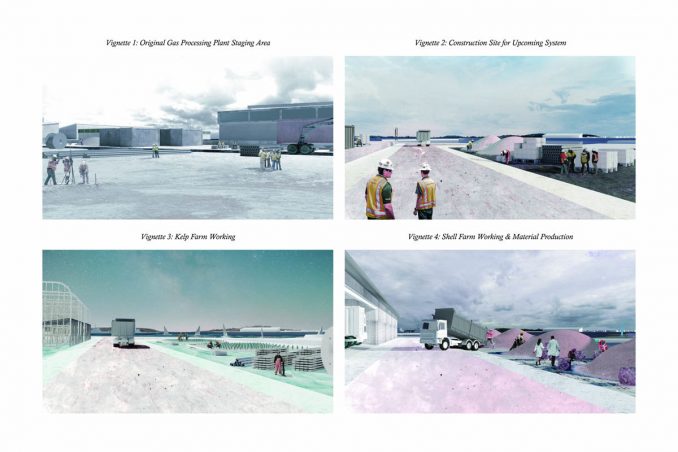
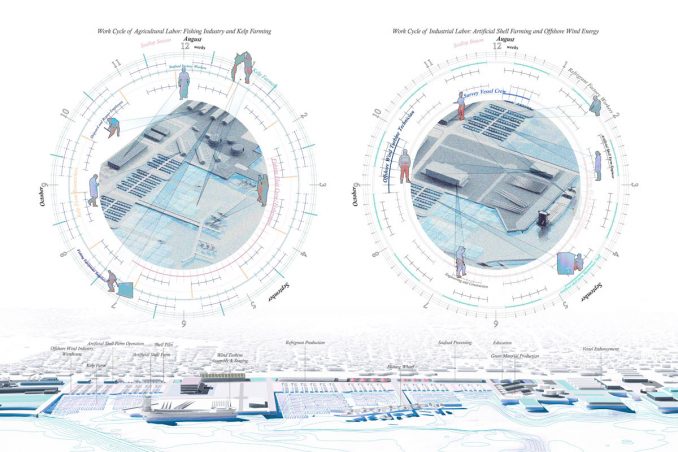
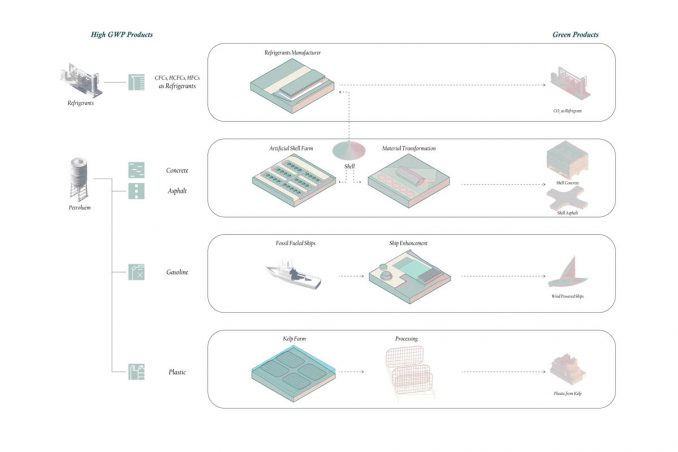
While the transformation of Site 1 happens, there will provide more opportunities for the overlapping and cooperation between agricultural and industrial labor. Labor might become fluid across different industries. Despite the shift of programs, the skills required by different job opportunities will still be similar.
New Bedford will eventually be the cooperative ground for fisheries, the wind energy industry and carbon-neutral infrastructure.
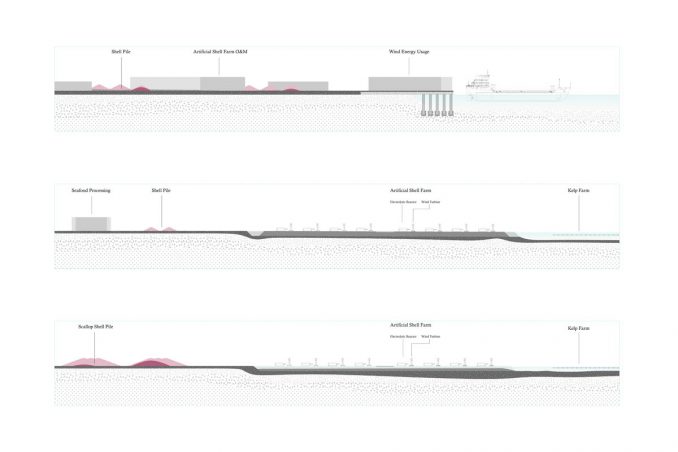
Site 2 – Energy Production and Ecosystem
Located in the Vineyard offshore wind farm, there are two modular installations within site 2: the modular platforms and the cubic artificial reef units underwater. The reef effect of these platforms will start establishing the ecosystems around each wind turbine, and the underwater reef systems will later form a reef network to further support the fishing industry. Different programs are supported by modular platforms, so is an ecosystem for the fishing and carbon sequestration process. The fluidity of labor between both industries also exists in this part of the system. The harmony between industries and between humans and nature will happen both horizontally and vertically.
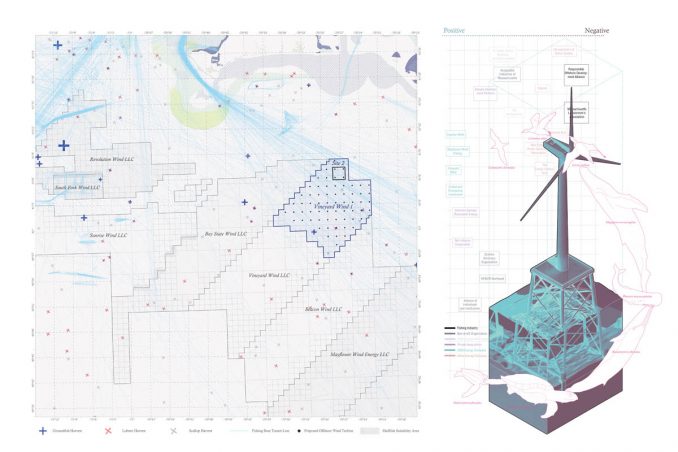
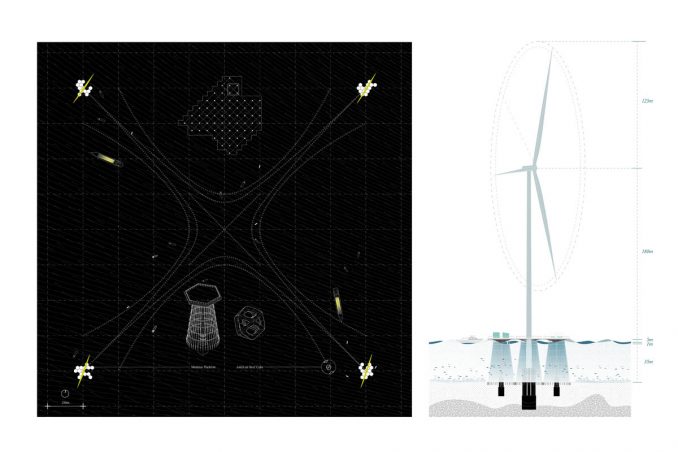
This proposal engages with the material flow of carbon, the process of both industries, and the labor force to create a symbiosis that presents a possible future of New Bedford ports and offshore wind farms and react to climate change.
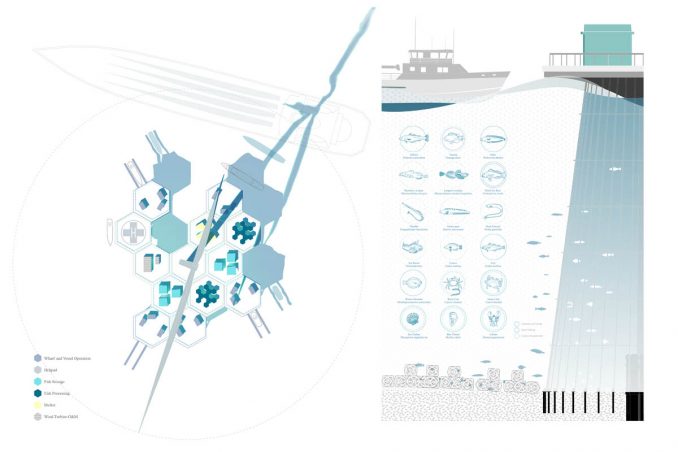
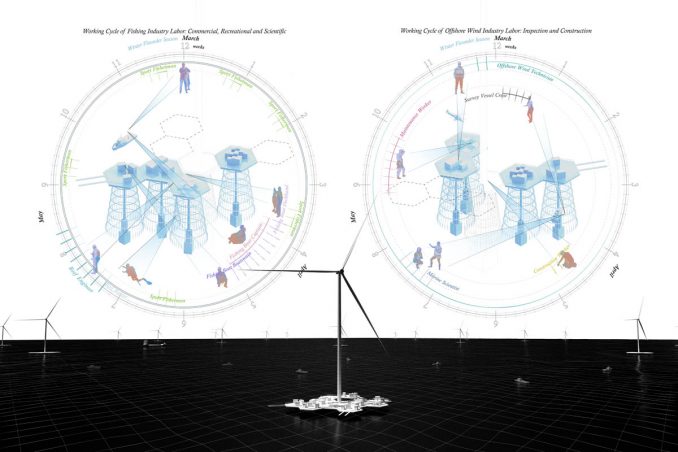
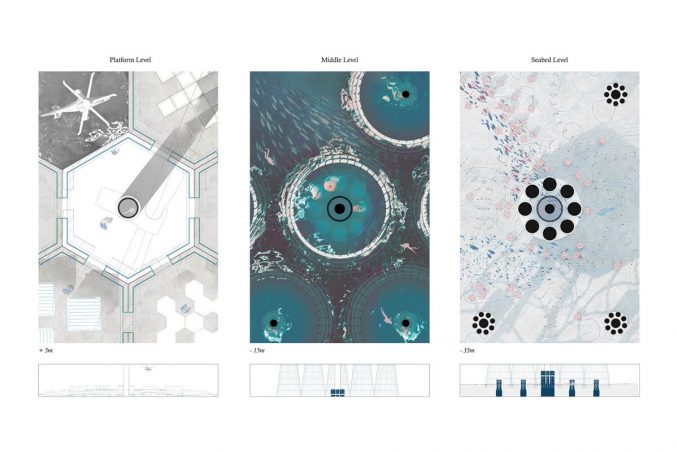
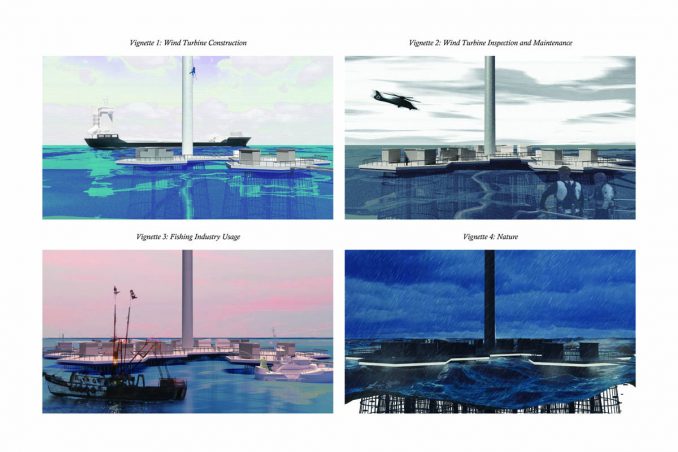
Carbon Sequestration Symbiosis
Student: Zhuohan Zhou, Harvard University GSD
Advisor: Claire Fellman
